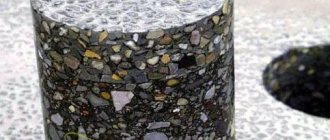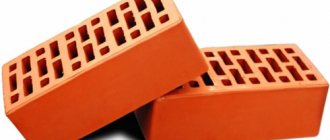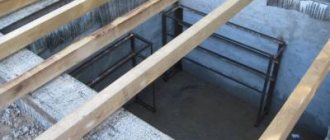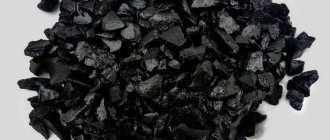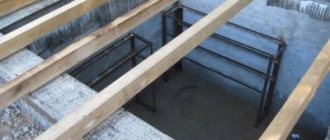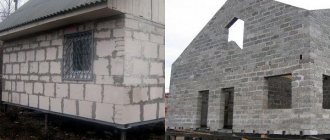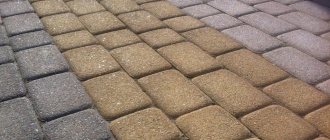Asphalt concrete mixture is one of the most common modern materials used in road construction, which consists of crushed stone of different fractions, quartz sand, special mineral powder and bitumen. All this is mixed in the right proportions while hot, and then laid out as a road surface. Classified according to GOST 9128-2009.
Thanks to its composition, the building material provides optimal surface texture, can be used immediately after installation, is easy to work, operate, repair, has a long service life and excellent technical characteristics.
What is asphalt concrete - definition
Asphalt concrete is a non-firing artificial building material that is obtained by compacting an optimally selected and specially prepared mixture of mineral material (sand, crushed stone, mineral powder and others) and bitumen (sometimes tar) for laying on a prepared base. Depending on the fraction of materials and their proportion, road material is divided into several types, each of which demonstrates certain properties and characteristics.
Device technology
The asphalt concrete mixture may be of high quality, but if the technology was not followed during installation, the coating will quickly fail. When performing each stage of work, you must follow clear rules that are established by GOST R 54401-2011, 9128-2009, SNiP 3.06.03-85.
Preparation
Activities include the development of a technical project and the preparation of financial estimates. When planning, the object is tied to the terrain, providing for the possibility of removing wastewater and preserving above-ground and underground communications.
Before installing the asphalt concrete surface, large trees are cut down and the top fertile soil is removed. The higher the design load on the roadway, the greater the volume of excavation work that must be performed to create a foundation with sufficient load-bearing capacity. For garden paths and sidewalks, the layer height is 10-20 cm, for loaded roads - up to several meters.
To prevent water from stagnating under the asphalt concrete road, drainage is organized. The soil is transported outside the territory to avoid clogging the drainage system in the event of erosion.
Pillow device
The function of the cushion is to absorb compressive loads during the operation of asphalt concrete surfaces. Its thickness is determined by calculation. First, large fractions up to 60 mm are laid, then medium ones 20-40 mm, sand on top with obligatory compaction of each layer.
In private construction, various construction waste is used for backfilling, which is much more economical than crushed stone or gravel. Curbs or other durable materials are laid along the edges of the asphalt concrete road.
Laying asphalt concrete
Work is carried out in dry weather at a temperature not lower than 5°C. Depending on the type of asphalt concrete mixtures, the following technologies are used:
- The cold mixture is laid on a prepared base, preferably spilled with bitumen, in a layer of up to 5 cm. Compacted with a manual tamper or vibrating plate. Cement or sand is sprinkled on top to reduce the stickiness of the road surface.
- Hot asphalt concrete is made from molten bitumen and aggregates, thoroughly mixed and laid on the base. The mass is rolled or compacted. Operation is permitted after 6 hours.
- Cast asphalt is laid very hot - up to 235°C. It is fed from the kocher, which heats and mixes the mixture, into the hopper of the asphalt paver. After uniform distribution over the surface, the composite cools and hardens. No compacting or rolling is required.
Application
Asphalt concrete mixtures are used to create hard surfaces for pedestrian areas, highways, taxiways and airfield runways, various sites and other surfaces. Liquid asphalt mixture is often used in pothole repair. It does not require compaction and leveling after installation, makes it possible to accurately align the surfaces of the old and newly laid coatings, hardens quickly, allowing movement to be opened in a minimum period of time.
For covering sidewalks, decorating pedestrian paths, dividing strips, and highlighting certain sections of the road surface, colored material is used. The desired effect can be achieved through corrugation, embossing, and the addition of multi-colored minerals (sand from granite, marble, colored stone, pigments).
conclusions
The brand of asphalt cannot serve as an unambiguous indicator of the strength of the material, since each brand includes several possible combinations of parameters of asphalt concrete mixtures.
One grade of asphalt may indicate high-strength crushed stone asphalt, but it may also include much less durable sand asphalt.
In total, there are 3 brands of asphalt concrete, which classify mixtures according to 4 parameters:
- Composition and type of base material;
- Density/porosity;
- Installation conditions;
- Content in rock composition.
Moreover, this marking reflects the level of quality of the material when used for its intended purpose - some asphalt mixtures are intended for roads of different categories, and some for the construction of pedestrian areas.
Types of mixtures
Asphalt concrete road mixtures are differentiated into types in accordance with properties, composition, proportions of components, etc.
General classification:
1) By volume of crushed stone content in the composition - grade A (50-60%), B (from 40% to 50%), C (30-40%). Grades G and D are sandy and contain no crushed stone at all. Hot asphalt concrete mixtures with high density are also isolated, in which the volume of gravel or crushed stone exceeds 50-60%.
2) According to the fraction of mineral grains - sand compositions (maximum sand grain is 5 millimeters), coarse-grained (up to 40 millimeters), fine-grained (grain less than 20 millimeters).
3) According to the material used - crushed stone, gravel, sand compositions.
4) According to the temperature at the time of asphalt laying - cold (when distributed, the temperature should be approximately +5C), hot (distributed at a temperature of at least +120C).
5) By density - the porosity of the mineral part of the cold mixture is 6-10%, there are several hot ones: high-density (residual porosity 1-2.5%), dense (from 2.5 to 5%), porous (about 5-10%), highly porous ( 10-18%).
By type of binders and operating conditions:
- Classic mixtures are used for making road surfaces, city sidewalks and road surfaces.
- Crushed stone-mastic mixture - stabilizing fibrous additives are added to it (this can be cellulose, etc.), relevant for the construction of highways with high throughput.
- Polymers asphalt concrete - plasticizers and copolymers are added to the composition, making it possible to make road surfaces of airfields, bridges, roadways of industrial enterprises, etc. more durable and durable.
- Separately, it is worth highlighting organomineral mixtures, which are created by mixing limestone and bitumen and are used in the process of repairing road surfaces.
How does the base affect the quality of the road surface?
Also, during the construction of roads, the base of the roadway plays an important role - it must be made in full compliance with road construction technology, for which the specialists of the road construction company must take into account a lot of factors.
If the “road cushion” is built with violations in the technological process, then even a high-quality asphalt covering in several layers will soon deform. Therefore, be careful when choosing a contractor.
How to build a road base:
- 1. First of all, you need to conduct reconnaissance of the area and geodetic research.
- 2. All necessary calculations are made and a work plan is drawn up.
- 3. The area is prepared: the area for work is cleared, obstacles are removed, communications are moved, etc.
- 4. Next comes soil preparation: the top layers are removed, the area is leveled, backfilled if necessary, and then compacted with special equipment.
- 5. Geotextiles are laid.
- 6. A sand layer is poured out, which must be compacted.
- 7. Geogrid is laid.
- 8. Crushed stone of different fractions is poured (first large, then small), after which the crushed stone layer is compacted with heavy road rollers.
Only after this can you begin laying asphalt concrete to form the finished asphalt surface. At this stage, as at all previous ones, it is important to comply with road construction technology, as well as to efficiently compact the road surface with special equipment. If we are talking about asphalting pedestrian areas or parking lots for personal vehicles, the asphalt technology is simplified. However, the need for quality sealing never goes away. The only exception will be cases using cast asphalt concrete. If you want to find out how well the road surface was compacted, you can use the calculation of the asphalt compaction coefficient. This test is carried out in laboratory conditions and allows us to determine whether the actual density of the asphalt pavement meets GOST standards.
Compound
When calculating what the composition consists of, it is worth distinguishing two groups of components: an organic binder and a mineral filler. The design of a specific composition is carried out taking into account the physical and chemical properties of the material and regulatory requirements.
The main components of the asphalt-concrete mixture:
1) Crushed stone or gravel - to prevent creep and increase service life, it is necessary that the binder adheres well to the aggregate grains. For this purpose, crushed stone of dense rocks and metamorphic carbonate rocks (usually limestones, dolomites), in the shape of a cube, is most often used. The number of lamellar grains should be a maximum: 15% for grade A, 25% for B, 35% for grade C. The volume of dusty or clayey inclusions should not exceed 1-2%. Crushed stone is taken with a grain size of 10-40 millimeters.
Sand and gravel included in the composition must comply with the standards specified in GOST 8736-93. "Sand for construction work." (106kB) and GOST 8267-93. “Crushed stone and gravel from dense rocks for construction work.” (179kB).
2) Sand – screening of crushed stone or natural deposits (not river sand) of different fractions due to the fact that fractions of the same size increase the porosity of the layer. Sand can be coarse-grained (Mk 2.5), medium-grained (Mk 2.0-2.5) and fine-grained (Mk 1.0-2.0). In terms of strength, fine aggregates should not be of a grade lower than 1000, the maximum volume of clay particles is 0.5%.
Crushed natural sand and wear-resistant high-strength crushed stone provide the desired rough texture of the coating. Sand with mineral powder acts as a ligature that structures the bitumen, affects heat resistance, weight and density, and gives the necessary strength to the road.
3) Mineral powder – should be finely ground enough so that when sieved in a wet state, it easily passes through a sieve with 1.25 millimeter holes. The hydrophilicity coefficient should not exceed one. The quantity and quality of the powder, with equal proportions of other components, directly affect the structure of the binder. If there is too much powder, the coating will be less durable (especially at sub-zero temperatures).
4) Bitumen - a product of oil refining, acts as a binder, gluing together all large components and filling the gaps between them, making the asphalt mixture waterproof and durable. Bitumen can be viscous and liquid; the level of viscosity is indicated in the documentation and depends on the temperature and components. It must be remembered that when the temperature rises, the viscosity index decreases, and when it decreases, it increases. At minus temperatures, the binder sets and becomes very brittle.
Brands of road bitumen - BND 40/60, 60/90, 90/130, 130/200. Viscous compositions are used to create mixtures of any temperature; they act as the main raw material for the preparation of a liquid product, subject to the addition of various solvents. In winter, a liquid product is usually used, with special thinners and additives; they evaporate during the hardening process of the coating and give the bitumen its normal state.
What composition can an asphalt surface have?
The composition of asphalt concrete directly affects the quality and other characteristics that the asphalt pavement will have. In addition to the set of components, their proportions also play an important role. Therefore, it is best to contact a road construction company that has its own asphalt concrete production.
The composition of the asphalt mixture will change when at least one component is added, but today there are 3 main options:
- 1. Sandy asphalt;
- 2. Asphalt crumbs;
- 3. Crushed stone-mastic asphalt;
Asphalt pavement made from sandy asphalt concrete
has a fairly homogeneous structure, and its main component is sand. It is a budget option, suitable for arranging pedestrian areas, access roads, and parking lots for personal vehicles. Can also be used for local roads where light or medium traffic is expected.
Crushed stone-mastic asphalt concrete
is the highest quality option, perfect for paving areas with any load: from low to very high. The composition includes hard rocks (70-80%), creating a reliable stone “skeleton” of the road surface.
The composition also contains special cellulose fibers that prevent bitumen from spreading. Due to its high characteristics, asphalt pavement made from crushed stone-mastic asphalt concrete is the main one in many countries around the world.
Asphalt crumbs
It is crushed asphalt, due to which this material has a budget cost. However, this does not mean that such asphalt pavement will be of poor quality. If the crumb was obtained, for example, from crushed stone-mastic asphalt concrete, then its quality will be quite high. Suitable for pedestrian areas, driveways, parking lots and roads with light to medium traffic.
Requirements for mixtures
State standards require that the content of lamellar grains in crushed stone (gravel) be a maximum of 15% for grade A and high-density solutions, 25% for grade B and Bx, 35% for grade B and Bx.
Building materials must be produced in production in compliance with all rules and regulations, loaded into a dump truck, and delivered only after careful testing and calculation of the properties of the future coating, taking into account the requirements and characteristics of operation. To avoid the appearance of unevenness and potholes, the material should not be subjected to delamination (segregation), which causes incorrect distribution of the binder, air bubbles and grains in the composition and leads to rapid destruction of the layer after completion of work.
Why do you need to know the strength of asphalt?
This indicator has the most practical significance. Based on this, ABS compositions are selected for specific tasks. For example, to lay a heavily loaded highway, you need durable asphalt with a rigid frame and a minimum content of pores. And if we are talking about a pedestrian path or a site near a private house, then you can save money and take material with worse characteristics.
The strength value is also used to determine other properties of asphalt and ABS:
- Uniformity
- Water resistance
- Frost resistance
- Shear resistance
Let's talk about them in a little more detail.
Uniformity
This is a technological property of ABS, which shows how evenly the components of the mixture are mixed. The quality of asphalt laying directly depends on it. A heterogeneous material cannot be compacted efficiently; weak areas are formed in it - places with reduced strength and water resistance values. This type of road surface quickly develops potholes and requires frequent repairs.
The homogeneity of hot mixtures is assessed statistically. To do this, they look at how much the strength values of several samples of the same material diverge - that is, they calculate the coefficient of variation.
You can learn more about this property on the Asphalt Uniformity page.
Water resistance
It characterizes the ability of asphalt concrete to resist destruction by water. The aggressive effect of moisture is that it penetrates under the bitumen films on the filler grains and tears them off, destroying the structural bonds in the coating.
Water resistance is calculated as the ratio of the strengths of asphalt in two states: dry and water-saturated.
You can learn more about this property on the page Water resistance of asphalt.
Frost resistance
It refers to the ability of asphalt concrete to withstand freezing and thawing cycles. The danger of such temperature fluctuations is that water accumulated in the pores of the coating expands when freezing and puts pressure on it from the inside.
To determine frost resistance, asphalt samples are saturated with moisture, frozen and warmed several times, and then measured to what extent its compressive strength has decreased.
You can learn more about this property on the page Frost resistance of asphalt.
Shear stability
This characteristic shows how easily asphalt deforms under the wheels of cars at high temperatures - for example, in the summer heat. The higher it is, the better the coating retains its rigidity.
Shear resistance is described by two indicators: the coefficient of internal friction and shear adhesion. To calculate the latter, the value of the compressive strength at a temperature of 50°C is used.
You can learn more about this property on the Shear resistance of asphalt page.
In the next section, we will take a closer look at what indicators are used to describe the strength of asphalt concrete and how they are measured.
Brands and types of asphalt concrete
There are only two brands of asphalt concrete and their characteristics differ quite significantly, which is explained by the different strength of the stone material. The compositions of the first brand use crushed stone 1000-1200, the second - 800-1000.
Characteristics and types of asphalt concrete mixtures:
Grade I – the structure of asphalt concrete is different; this category unites dissimilar materials. These include sandy, gravel, porous and highly porous (hot and cold analogues), dense A, B, D and high-density compositions, Bx, Bx, Gx. The common denominator is the maximum strength of the material for its composition. Such grades are used where it is necessary to ensure very high strength, usually as the bottom layer of the fabric.
II – “ordinary” asphalt concrete, which is used in a variety of areas of construction and operation. These include porous, dense A, B, C, D, D, high-density asphalts, Bx, Bx, Gx, Dx. They cover the top layer of roads, useful for repair work, improvement of parks and courtyards, ordinary roads, etc.
III - the least durable and most dense (B, C, D, D) material, which does not contain crushed stone, but contains mineral powders and sand. Typically used for repairing and constructing roads that will not withstand serious tests and loads - sidewalks, pedestrian paths, garden areas, pothole repairs in road construction.
What is the difference between asphalt and asphalt concrete?
Asphalt concrete mixture is an artificial material that is obtained by mixing solid ingredients with petroleum road bitumen.
Natural asphalt is formed in the process of thickening and oxidation of oil that has come to the surface of the earth in the form of reservoir deposits, individual veins or lakes.
The word “asphalt” translated from ancient Greek means mountain tar. It is a fusible black substance. The fracture is conchoidal, matte or shiny. Contains up to 70% petroleum bitumen.
The largest sources of natural asphalt are the Dead Sea in Israel and Peach Lake in Trinidad. The ancient Syrians mined hard bitumen, which floated to the surface in huge blocks, the weight of which reached 1000 kg.
Mountain resin was used for waterproofing ships, hut walls, granary floors, and for making paints or varnishes. In Ancient Egypt, the substance was used to embalm the dead.
Natural asphalt supplies are limited. Painting paints and paint products are made from high-quality raw materials. In road construction, when installing an asphalt concrete surface covering, part of the liquid bitumen is replaced with solid bitumen. At the same time, the resistance to the effects of studded tires is significantly increased.
Peculiarities
When selecting a composition, it is necessary to take into account, first of all, the properties of asphalt concrete, which are determined by the composition. Main tasks: compaction of hot material, determination of porosity level, testing to confirm compliance with requirements. When designing, all norms and standards are observed in search of optimal characteristics of the road surface and its durability.
Stages of composition design:
1. Determining the quality and calculating the characteristics of the starting ingredients, assessing their compliance with the requirements of the specified brand
2. Calculation of the volume of the mineral part
3. Calculation of the optimal volume of bitumen
4. Drawing up a composition specification based on a detailed study of its physical and mechanical characteristics
All types of asphalt concrete are produced as follows:
- Selection of raw materials and determination of their quality
- Calculation of the volume of necessary components for the required amount of product
- Calculation of order cost
- Loading raw materials into a special hopper for preliminary dosing
- Drying mineral materials, heating to the required temperature
- Sorting by fractions, feeding to a high-precision weighing dispenser
- Warming up the binder to the required temperature (according to the type of composition), weighing, dosing
- Feeding all components into the mixer
Conditions for asphalt paving
This parameter defines:
- Temperature of the mixture at the time of asphalting;
- Air temperature;
- Base temperature;
- Is sealing required?
Features of varieties of asphalt concrete mixtures according to laying technology
| Hot | Cast | Cold | |
| Mixture temperature | 110-150°C | 190-250°C | not less than +5°C |
| Temperature of the underlying layer | not lower than +5°C | not lower than +5°C | not less than +5°C |
| Air temperature | not lower than +5°C | not lower than +5°C | not lower than -10°C (in emergency situations, the range expands to -20°C) |
| Is sealing required? | Yes | No | Yes |
| Physical and mechanical characteristics | High | High | Average |
| Application area | Construction and repair of asphalt concrete pavements | Construction and repair of asphalt concrete pavements | Pothole repair of asphalt concrete pavements |
After laying and compacting some asphalt concrete mixtures, artificial roughening is required.
Installation recommendations
First, the base is cleaned of dust and dirt using irrigation systems and machines with special brushes. All irregularities are eliminated, the base is treated with bitumen mastic. The material is produced in the factory or in mobile units, loaded into the back of a dump truck, transported to the site, and loaded into the hopper of a laying machine.
Workers lay the coating with their own hands or with a special laying machine, which distributes, levels, and compacts. Place 1-2 layers on a base containing gravel or crushed stone. The thickness of the bottom layer is 4-5 centimeters, it is made from a mixture with a medium or large fraction with a porosity of 5-10%. The outer layer is laid 3-4 centimeters thick from fine or medium-fraction asphalt with a porosity of 3-5%. Finally compacted by machine.
If we are talking about high loads and intense traffic, the coating is laid in 3-4 layers with a total thickness of 11-15 centimeters.
When laying sidewalks, the procedure is the same, but with some nuances: installing side stones to separate the road and sidewalk, laying a base (asphalt concrete from slag, stone, broken bricks, crumbs from old material) 10-15 centimeters thick, leveling, compacting, covering outer layer 3-5 centimeters thick.
Crushed stone
When working with crushed stone-mastic mixture, you need to be careful, since its temperature is approximately +150C. The classification of asphalt concrete mixtures by crushed stone fraction is indicated above. It is worth mentioning cast mixtures, which are used in the repair and construction of various coatings all year round, as a top layer. The temperature of the shipped composition is 220 degrees, so work can be carried out even in the cold.
The material is transported in a special heat-insulated bunker, where burners and mixers operate to heat and mix the ingredients. You can lay such asphalt even on a wet base.
How does load affect asphalt thickness?
| Load type | Asphalt concrete thickness |
| Small | 3 centimeters |
| Small | 6 centimeters |
| Average | ~12 centimeters |
| High | ~18 centimeters |
| Very high | up to 30 centimeters or more |
It is worth noting that when laying several layers of asphalt concrete on top of each other, compaction of each layer is required. If this is neglected, the asphalt pavement will deform and also lose its physical and mechanical properties.
Acceptance rules
To create a supply of mortar, loaders are used - special machines that ensure uninterrupted operation of the paver or the people doing the work. It is this transport that is used in the process of receiving asphalt concrete from vehicles directly into the paver.
When accepting, you need to take into account such nuances. The process itself is carried out in batches of single-component material, which was produced in one shift at the plant. The weight of hot trains accepted at one time should not exceed 600 tons, cold ones - a maximum of 200 tons. The volume of the solution is calculated by weight (special scales are used to determine it). When loading onto a ship upon completion of acceptance, the draft of the vessel must be measured.
To confirm that the product meets the requirements, a series of tests are carried out: tensile strength at different temperatures, resistance to external influences, water saturation, determination of grain composition. Having completed them, the buyer is given a document of compliance, separate for each shipment.
What are the advantages of asphalt pavement?
As mentioned at the beginning, asphalt pavement is the most popular material for arranging various road surfaces. Popularity is achieved solely due to the high performance characteristics and moderate cost of asphalt concrete.
The main advantages of asphalt pavement include:
- High strength;
- Good hardness;
- Resistance to deformation;
- Wear resistance;
- Moisture resistance;
- Long service life;
- Resistance to high temperatures;
- Resistance to low temperatures;
- Immunity to temperature changes;
- Maintainability;
- Safety for the environment, despite the use of bitumen;
- The asphalt surface is even and smooth;
- This coating does not generate dust and does not wear off;
- Variability of colors;
- Moderate cost;
All these advantages make asphalt the optimal option for paving, and in many areas of application. Another advantage is that asphalt concrete has many varieties to suit any needs and budget.
Thanks to this, there is no need to buy expensive crushed stone-mastic asphalt concrete for the construction of, for example, a garden path. It is enough to purchase budget asphalt chips or sand asphalt to satisfy the need.
If you need to repair an asphalt surface, you can use cold asphalt in bags, which allows you to carry out pothole repairs without special skills or the use of special equipment.
Consumption and density of building materials
The compaction and quality of asphalt depend on the properties defined by the state standard. The density and weight of a cubic meter of composition is affected by the sand used: quartz gives a weight of 2200 kilograms per 1m3, slag - 2350 1m3. Concrete with a coarse fraction of crushed stone weighs more, on average about 2100 kilograms. Calculating weight is important for determining the required volume of material, calculating its cost, attracting appropriate equipment, preparing the base, etc.
Calculation of solution consumption:
- Determining the area of the territory and the thickness of the coating - for example, you can take 100 square meters and a thickness of 1 centimeter.
- To cover 1 square meter of road with a layer of the specified thickness (1 centimeter) you need 25 kilograms of asphalt. For an area of 100 m2: 25 x 100 = 2500 kilograms.
- One cubic meter contains about 2250 kilograms of material - which means that to cover the site in the example you need: 2500 : 2250 = 1.10-1.11 m3 of composition.
Characteristics of asphalt concrete pavement
- 1. Asphalt concrete must contain sand, bitumen (a solid or resin-like substance) from 2 to 9%, as well as various minerals.
- 2. It is possible to contain a stone fraction, but its presence is not necessary. But, despite this, many asphalt concrete pavements are made on the basis of crushed stone.
- 3. The composition of the future asphalt concrete pavement also includes various additives. The main function of additives is to ensure wheel adhesion to asphalt concrete and increase roughness.
Porous coarse asphalt
Methods for determining the strength of asphalt
During its operation, asphalt concrete is exposed to a wide variety of influences. After all, cars on the road surface not only stand still, but also drive, accelerate, brake, and turn sharply. All this is a load of varying degrees and directions. That is why different types of strength are determined for asphalt.
The regulatory documents establish the following test methods:
- Compressive strength
- Tensile strength at splitting
- Bending tensile strength
- Fatigue strength under repeated bending
Let's figure out how they differ from each other.
Compressive strength
It shows the maximum pressure a material can withstand during vertical compression. For example, when heavy vehicles are standing on or driving across the surface.
This is the most common indicator, which is standardized in GOST 9128-2013.
It must be indicated in the quality certificate for asphalt:
- For hot mixtures – at temperatures of 50°C and 20°C
- For cold mixtures - at a temperature of 20°C, in a dry and water-saturated state
This is due to the fact that the strength of the material, as we have already noted, depends on its temperature.
The test begins with the preparation of cylindrical samples - samples of a freshly prepared mixture or cuttings from the laid coating. In this case, the former are compacted in a laboratory press, and the latter are cleaned of dust and debris, washed and dried.
Before starting measurements, the asphalt is brought to the desired temperature in a thermostat.
Compressive strength is determined as follows:
- A sample of the required temperature is placed vertically on the bottom plate of a hydraulic press. The top plate is installed so that there is still 1.5-2 mm between it and the top edge of the sample.
- The asphalt sample begins to be loaded at a press plate speed of 3 mm/min. The pressure at which the sample begins to collapse is recorded.
- Ultimate compressive strength Rcom is calculated using the formula:
The strength of asphalt saturated with moisture is determined in the same way. For this purpose, samples that have passed the water saturation test are taken. You can read more about this procedure in the article Water saturation of asphalt.
Tensile strength at splitting
This test shows how much load is required to split an asphalt sample along a generatrix. The indicator is measured at a temperature of 0°C and is used to assess such material properties as crack resistance.
The test procedure is similar to that described above.
Only two points differ:
- The cylindrical sample is installed on the bottom plate of the press not vertically, but horizontally
- The top plate moves faster - at a speed of 50 mm/min
As with compression, the maximum load that the sample can withstand is recorded.
The tensile strength during splitting Rр is calculated by the formula:
Typically this figure is 6-8 times less than the compressive strength.
Bending tensile strength
This characteristic shows how much load asphalt can withstand when bending without breaking. It is not yet standardized in the general GOST for asphalt concrete.
To carry out the test, dense parallelepipeds are formed from samples of the asphalt concrete mixture.
The procedure looks like this:
- The asphalt sample is mounted horizontally on two supports, which are located at its edges. A metal rod with a diameter of 10 mm is placed on top of the sample in the middle.
- Lower the top plate of the press and begin to load the sample at a speed of 3 mm/min. In this case, the pressure is concentrated in the area under the rod - the sample bends in the middle.
- The maximum load under which the asphalt begins to collapse is recorded.
- The tensile strength in bending R bend is calculated by the formula:
In the same test, other indicators are recorded and determined:
- Deflection amount
- Limit relative deformation
- Strain modulus
They are used to characterize the deformative properties of a material. You can read more about them on the page Deformability of asphalt.
Fatigue strength under repeated bending
The characteristics described above indicate how well the material can withstand static pressure. But these are not entirely objective indicators. Indeed, in reality, the load on the road surface is cyclical. It either increases (for example, during rush hours) or decreases.
What happens to the material during this time? Tiny cracks appear in its thickness. At first, they don’t show themselves at all. But over time, these microdamages accumulate, grow and unite. At some point, the asphalt can no longer hold up and collapses.
This process is called material fatigue. And the ability to resist it is fatigue strength or endurance. The procedure for determining it for asphalt concrete was developed relatively recently.
Its essence lies in the fact that a cyclic load is applied to a sample in the form of a slab - compacted in the laboratory or cut from a coating - and observed how its strength changes with an increase in the number of cycles. This dependence is depicted in the form of a graph.
If you are interested in specific instructions for testing and calculation formulas, you can find them in GOST R 58401.11-2019.
Road quality check
Asphalt concrete must comply with established GOSTs and SNiPs adopted in our country. A certificate of compliance with regulatory documents is issued to the manufacturer only after passing comprehensive tests.
There are several laboratories in Russia that monitor the quality of roads. They take samples of the finished asphalt concrete pavement and check it for compliance with various parameters.
During research, an average sample is selected from the total mass of asphalt concrete. Analysis of an already constructed road is carried out by examining a core (the so-called asphalt core). It is obtained by drilling the base of an asphalt concrete pavement using a special hollow drill.
Creation of decorative paths from asphalt
Asphalt itself is not aesthetically pleasing. Hot and cold mix coatings may boast a rich black color when installed, but will wear and fade over time. And cheap cuttings initially have a nondescript gray tint.
Fortunately, there are different ways to give your asphalt path a unique look:
- Curb stone Arrangement of a curb is a mandatory element in the construction of a path if it rises above ground level. It protects the edges of the asphalt from coloring and shedding. In addition, the curb also performs a decorative function. You can use either a traditional stone of white or light gray color, or various colored varieties.
- Zoning with paving slabs You can create a combined path by combining sections of asphalt and facing materials. This way you will kill two birds with one stone. On the one hand, decorative tiles will “revive” the area and give it variety. On the other hand, such a design will cost less than if you completely paved the area. Just keep in mind that laying tiles over existing asphalt is not recommended.
- Laying crumb rubber coating Asphalt concrete is a good and reliable base for all kinds of rubber materials: tiled, rolled and seamless (they are also called “soft asphalt”). They are available in different colors and also act as a shock-absorbing coating in areas where children play. The main condition is that the asphalt concrete must have a slight slope so that water does not stagnate on it.
- Applying bitumen emulsion or mastic This way you can “refresh” the old coating, returning to it the rich color of freshly laid asphalt. In addition, bitumen compounds clog small cracks and pores on the surface of the path and protect it from destruction by water, ice and deicing agents. Thanks to this, asphalt lasts longer.
- Applying rubber or polymer paint With its help, you can quickly paint the coating in any color of the rainbow. True, it does not look very natural and often stands out from the design of the site. In addition, even the highest quality paints fade and wear off over time, not to mention cheaper compositions.
- Colored asphalt For the sake of completeness, we will mention this option, but in practice it is almost never used. The fact is that to produce such material you need special bleached bitumen or synthetic binder. Add to this the cost of pigments, and it becomes clear that colored asphalt is not a cheap pleasure. If you really want to make a path of a certain color that will not fade over time, then it will be cheaper to order decorative tiles.
Summarize.
Asphalt is popular not only in the field of road construction, but also in landscaping and designing areas - both urban and private. It is used to make coverings for sidewalks, pedestrian, garden, bicycle and jogging paths. In cities, hot material based on sand or small crushed stone is used for this. But for a private home, cutting asphalt will be the most profitable. If the amount of work is small, you can use cold mixtures. They do not require heating and are easy to install by hand.
One of the disadvantages of the material is its modest decorative properties. To add variety to the design of the site, the asphalt path can be decorated with a curb or tiles, covered with special paint, or a soft rubber coating can be laid on it.
Pros and cons of concrete coating
When calculating what is more expensive, asphalt or concrete, you need to carefully study the characteristics of the second material. Concreting is also more relevant today than ever. Concrete perfectly withstands considerable loads, has an increased level of strength, and allows you to do everything yourself, without complex equipment and specialists, which significantly reduces the cost of the process.
The main advantages of concrete pavement:
- Durability - up to several decades, if a high-quality mixture was prepared when pouring and compliance with the technology was ensured
- Reliability and durability
- Resistance to a variety of external negative factors
- High level of wear resistance
- Excellent environmental performance
- No need to involve professionals, special equipment, or expensive tools
- Possibility to carry out all stages of work independently
The disadvantages of a concrete coating include: the surface is deformed in severe frosts (like asphalt, in principle), concrete is dusty, requires an additional coating with a finishing layer or primer, the material gains strength after 28 days, the coating is relatively expensive, not very aesthetically pleasing, if cracks cannot be repaired (only complete replacement of the layer).

